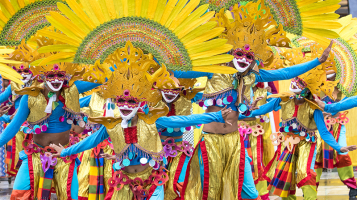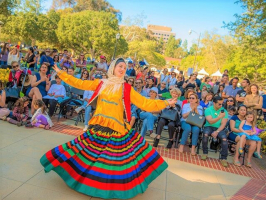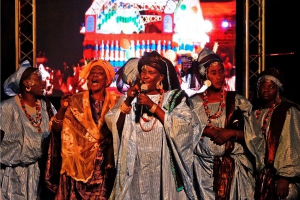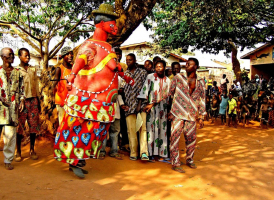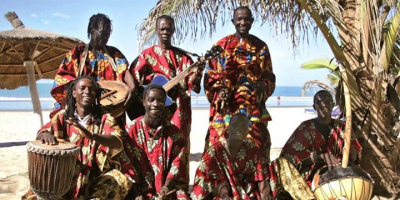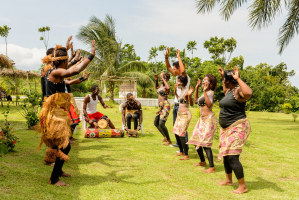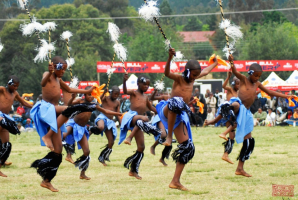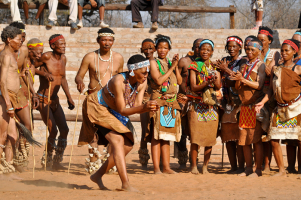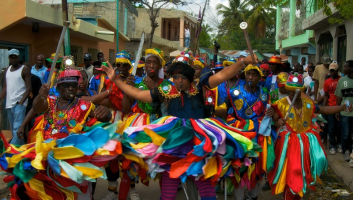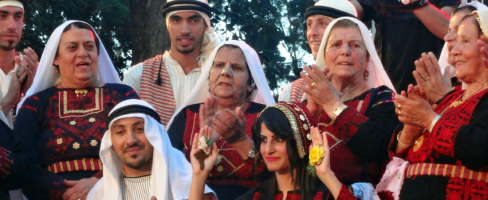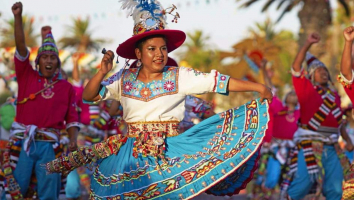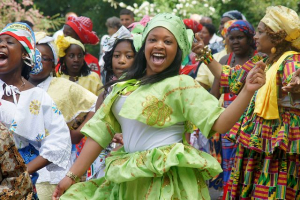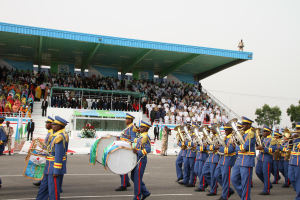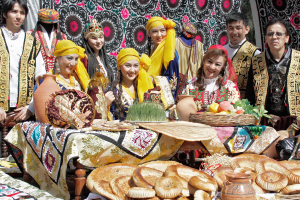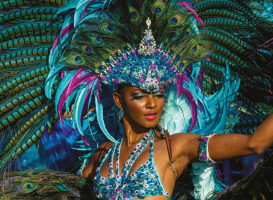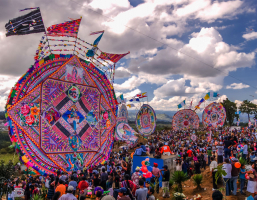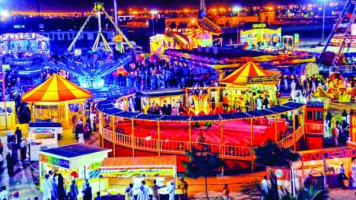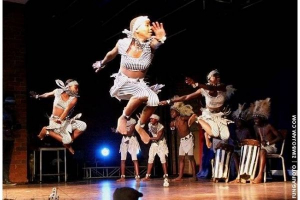Top 9 Most Famous Festivals in Colombia
Colombia's popular festivals are full of rhythm, enjoyment, and color, as well as a depth of culture. The country has a variety of fairs and festivals that ... read more...take place throughout the year and in all the country's towns. Some Colombian festivals have a history that dates back over a century, making them famous tourist attractions. So that you can enjoy the authentic feel of the country, we recommend top the most famous festivals in Colombia.
-
The Carnival of Barranquilla is one of the most famous festivals in Colombia, as well as one of the world's largest carnivals. The carnival has a long history, dating back to the nineteenth century. Barranquilla decks itself out four days before Holy Week to welcome national and international tourists who will join the city's residents for four days of intense celebrations. Barranquilla's routine activities are put on hold during the carnival as the city comes alive with street dances, musical and masquerade parades. The Spanish palate, African Congo, and indigenous mico y micas are among the dances performed at the Barranquilla Carnival. Drums and wind ensembles are used to perform a variety of Colombian music forms, the most renowned of which being cumbia.
The Battle of the Flowers (La Batalla de Flores), which is considered one of the main activities, kicks off the Carnival on the Saturday before Ash Wednesday. The Great Parade (La Gran Parada) is followed by an Orchestra Festival with the Caribbean and Latin bands on Sunday and Monday. Tuesday signifies the end of the carnival, proclaimed by the burial of Joselito Carnaval, who is mourned by everyone. The Carnival tagline in Barranquilla is "Those who live it, love it."
Colombia's National Congress declared the Barranquilla Carnival a National Cultural Masterpiece in 2002. It was also during Olga Lucia Rodriquez's Carnival Queen year that UNESCO recognized it one of the Masterpieces of the Oral and Intangible Heritage of Humanity on November 7, 2003 in Paris.
Dates: End of February to march
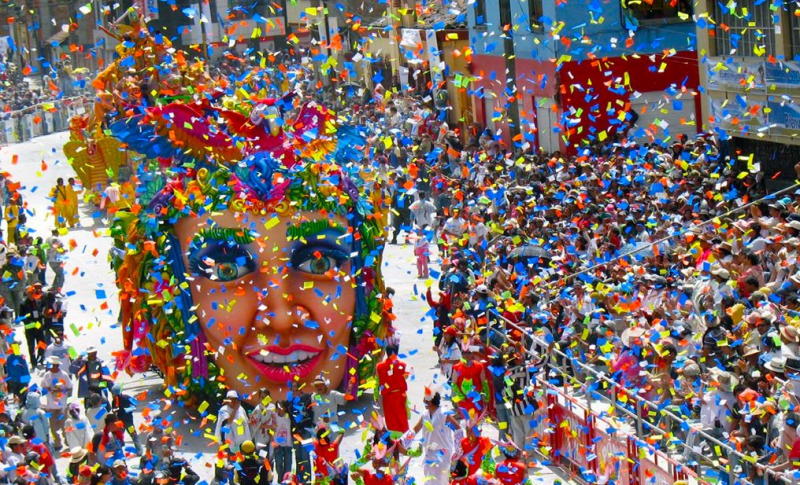
Photo: battleface 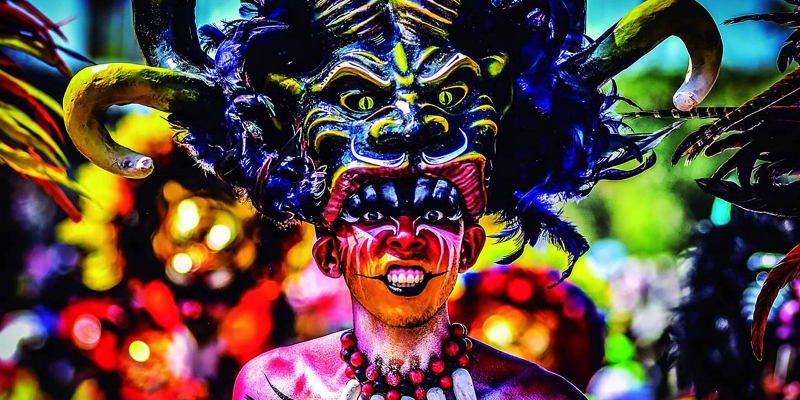
Photo: newyorklatinculture -
The week preceding up to Easter Sunday, known as Semana Santa is one of Colombia's most important holidays and a popular vacation time. Colombia is primarily a Catholic country, therefore many of the country's 18 national holidays are religious holidays. The Semana Santa commemorates Jesus Christ's death and resurrection.
Normally, cities, towns, families, and individuals around Colombia celebrate and commemorate Semana Santa in a variety of ways and with varying degrees of passion. During Semana Santa, Catholics in Colombia participate in ceremonial pilgrimages to churches throughout the city to commemorate Christ's journey to his crucifixion.During Semana Santa, several of Colombia's smaller villages come alive. For example, the peaceful colonial villages of Popayán and Mompox are transformed into lively religious gatherings. In 2009, the processions of Popayán were added to UNESCO's Intangible Cultural Heritage Lists. Popayán's old central streets are lined with ancient religious images.
Dates : 14 - 20, April
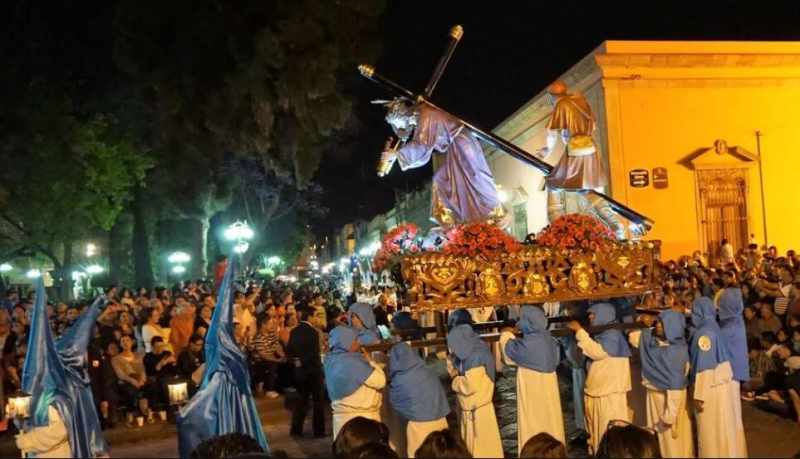
Photo: clima 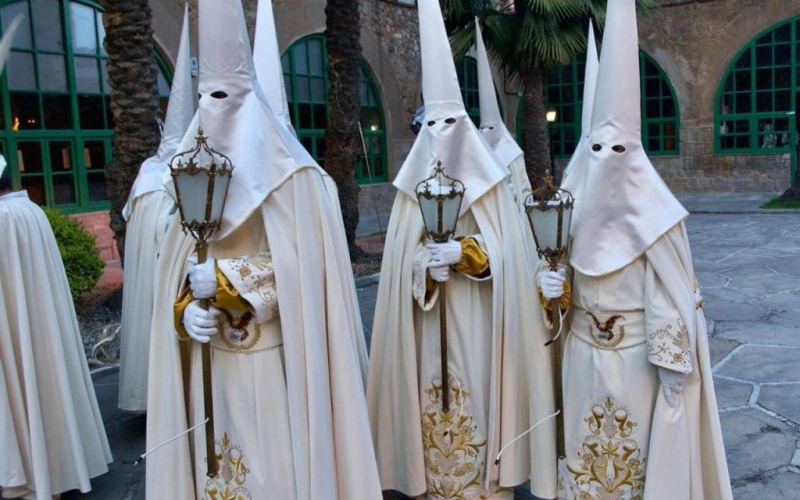
Photo: mexicorutamagica -
In Colombia, August is springtime, and the cities celebrate with bursts of fragrant hues and a variety of activities that last for days at a time. The annual Feria de Las Flores in Medellín is one of Colombia's most important regional festivities and has established itself as a traveler favorite. The event, which takes place over a week in early August, is a celebration of Medellín's identity as well as a showcase of the city's beautiful flowers. Certainly it also one of the most famous festivals in Colombia.
The festival's centerpiece is flowers, but there's a lot more to the weeklong event than roses, orchids, and lilies. Music is a top priority at this Colombian festival, and there are a variety of concerts, cultural events, and sporting activities to enjoy during the week. Even if flowers aren't your thing, there's no reason to skip out on the Flower Festival's enjoyment.
Even while there are other things to do in Medellín in August than admire the flowers, it wouldn't be a visit to the city without taking in the region's stunning blooming. Hundreds of local flower farmers parade through the streets of the city with large flower displays strapped to their backs during the festival, but the Defile de Silleteros (or "Flower Grower's Parade") is the actual highlight. They dress up in traditional garb and compete to see who can create the most beautiful and ornate arrangement. The procession is a riot of color and energy, and it is without a doubt one of the most enjoyable of any Colombian holiday.
Medellín is a bike-friendly city, and the Flower Festival is no exception: they conduct a special cycling event that highlights the finest of the festival and the city from the perspective of two wheels. The event begins at Lights Park in downtown Medellín and lasts until 8 p.m., allowing participants to explore the city by day and night while also seeing the city's most prominent exhibitions in a pleasant, safe, and ecologically friendly manner.Dates : 03 - 12, August
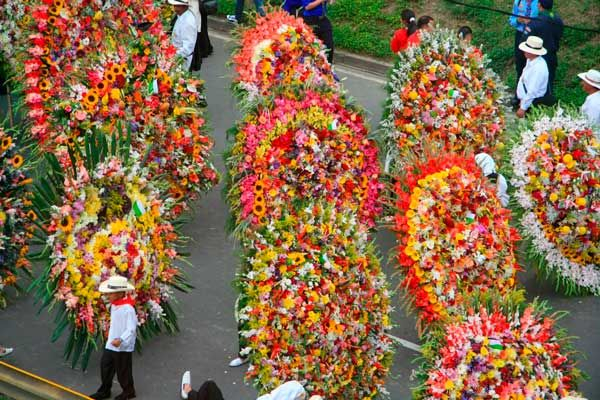
Photo: pinterest 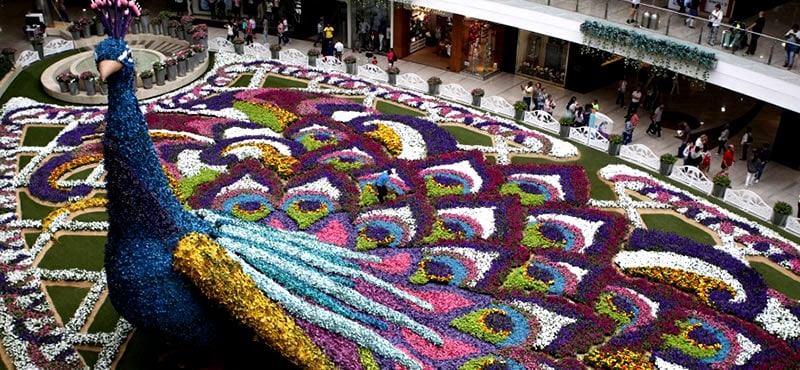
Photo: gaytravel4u -
Cali, located in southwestern Colombia's Cauca Valley, is noted for its fervent devotion to the Afro-Caribbean form of music and dancing known as salsa. Cali is known as the "Salsa Capital of the World," with more than 200 salsa academies and more than 40 clubs where the spicy dance can be seen, heard, and experienced, not to mention the innumerable informal places where people kick it up nightly.
Cali's devotion, on the other hand, is never more evident than during its yearly festival, when the city dresses up and organizes one of the world's most prominent salsa tournaments. In addition to salsa seminars, a food fair, academic discussions, artisan stalls, and more, the festival brings together the best players in the salsa game, with the genre's most notable dancers and musicians competing, performing, and sharing their abilities.
Cali World Salsa Festival, which takes place at the Coliseo El Pueblo, is a great way for locals and visitors to get a taste of salsa culture while also letting their inner dancer out. The World Salsa Festival is a one-of-a-kind event that attracts over 44,000 people each year to watch thousands of musicians from around the world perform, culminating in over 56 hours of salsa over the course of the festival's four days.The festivities pay homage to salsa calea, Cali's unique brand of salsa dance, which is known around the world for the incredible speed with which the dancers move their feet, as well as the imaginative choreography and colorful costumes.
Dates: 25 - 30 December
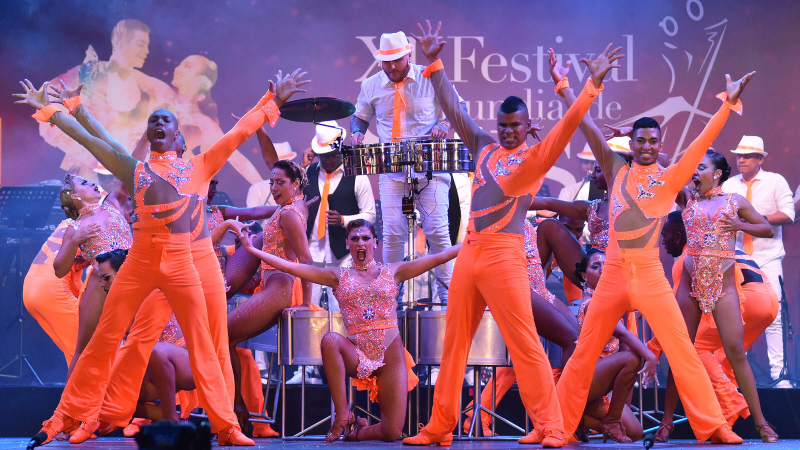
Photo: amexessentials 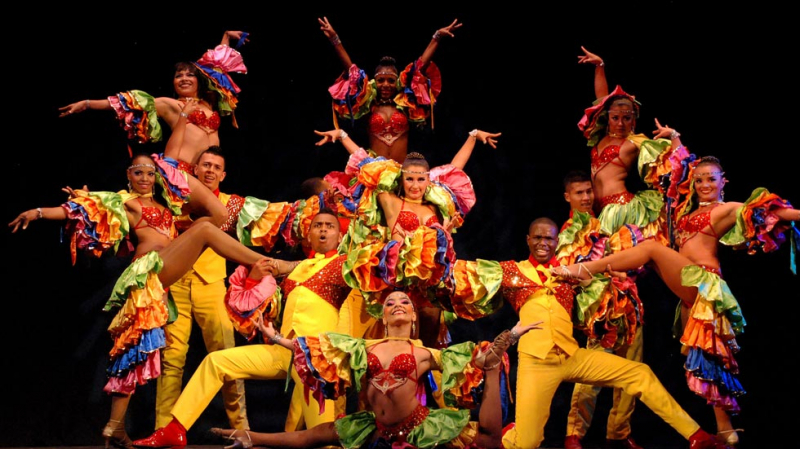
Photo: colombiareports -
Petronio Alvarez Cali Music Festival , held each year in Cali, is a national cultural heritage festival that honors the culture, history, musical, and culinary traditions of Colombia's Afro-descendant people, while also promoting the country's Pacific coast folklore.
Famous music forms such as Violn Caucano, Marimba y Cantos Tradicionales, Chirima, Libre, and special delicacies from the Pacific region will be included on this Colombian Cultural Tour. This type of Colombian culture is rare and difficult to come by, which is why the Petronio Alvarez Cali Music Festival is your greatest chance to see it all in one spectacular event.
These are oral traditions, and the festival allows songs and practices to be passed down from generation to generation. Instruments such as the marimba, guasá, flutes, and clarinets will build up to a melodic frenzy. Plus, you'll see peak Pacific fashion in the material and clothing designs of the outfits worn by women who have meticulously braided and weaved their hair, not only at the cultural fashion shows but also in the material and clothing designs of the outfits worn by women who have meticulously braided and weaved their hair.
In its 22 years of existence, Petronio has expanded substantially in size and popularity, requiring three relocations to accommodate the 600,000 attendees. Come ready to wave your hands in the air and be a part of a Colombian Pacific-wide artistic festival.Dates: 14-19 August
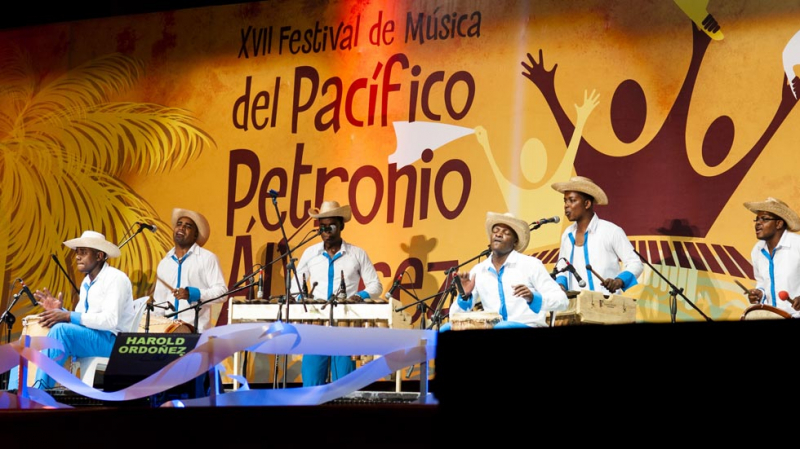
Photo: colombiareports 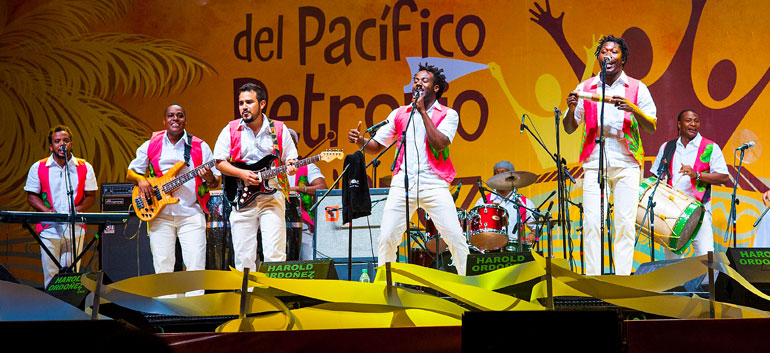
Photo: colombiareports -
The Yipao Festival in Armenia is a folklore event in the Colombian department of Quindo, particularly around the departmental capital Armenia's anniversary ceremonies. Jeep cars, which have become a beloved emblem of the coffee culture, are owned by many families in the Paisa region and Colombian Coffee-Growers Axis. In a kitsch aesthetic, Jeeps often feature a lot of ornaments, iconography, and flashy embellishments.
In Armenia, Quindo, and Calarcá, Quindo, the Yipao parade is held at anniversary parties. Mrs. Joan Jaramillo, headmistress of the protocol of the Governor's office of Quindio, coordinated the first procession in 1988. The event is divided into many categories based on the merchandise carried in the vehicles:
- Agricultural products
- Coffee
- Furniture
- People
- Institutional advertisement
The Jeeps with the most goods hauled, and the most harmonic groupings, receive rewards as they travel through the city's main streets. With a caravan of almost 370 Jeep Willys cars, Guinness World Records were achieved The Yipao Festival in Armenia for the "Longest Jeep Parade" in Calarca in February 2006.
Dates: early October
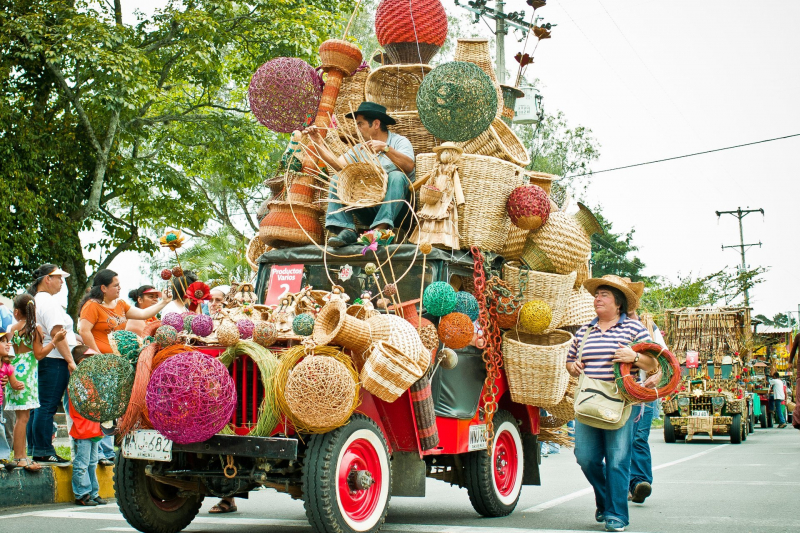
Photo: rove 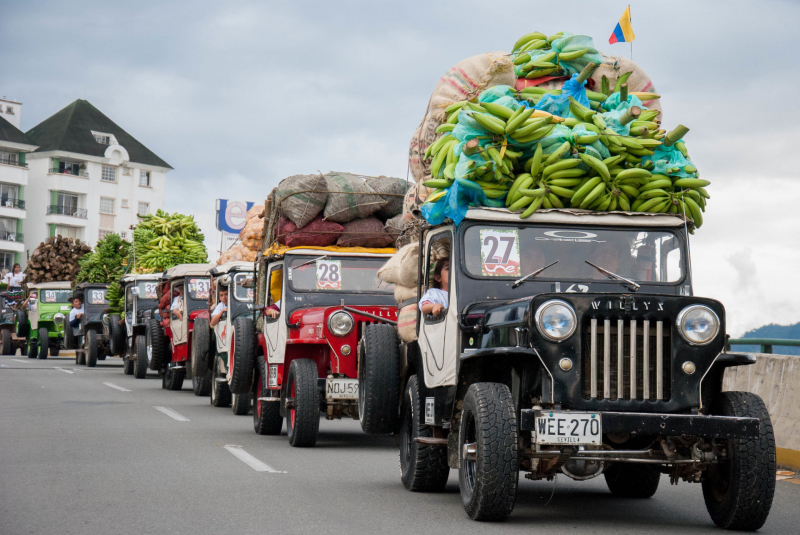
Photo: rove -
The Blacks and Whites' Carnival is the greatest carnival festival in south Colombia, with the city of Pasto as its geographical designation. Every year, from January 2nd to January 7th, it attracts numerous Colombian and international tourists. The Black and White Carnival is one of Colombia's most iconic festivals, representing the country's cultural traditions. It was designated as a Cultural Heritage of Humanity by UNESCO in 2009, and it attracts tourists from all over the world as well as Colombians. Certainly it is one of the most famous festivals in Colombia.
The Blacks and Whites' Carnival takes place in Pasto from the 2nd to the 7th of January. On the 28th and 30th of December, however, a Pre-Carnival is held. The Carnival of Water is held on the first day, and it consists of fun water fights with hoses, trash cans, and water balloons. The famous Serenade to Pasto is performed on the second day, during which you can listen to music by the top string trios in the Andean Region.The Carnavalito and the Castaeda Family Parade kick off the official festival. Observe provincial dances performed by groups of performers of various ages dressed in traditional garb. The last days of the carnival, however, are the most unforgettable. As they follow the parade of floats, participants paint their bodies black and white. Finally, on January 7, the "Day of Guinea Pig," one of Nario's most important meals, is commemorated, and the region's cuisine is showcased.
This is the only carnival with fully indigenous roots, having developed as a result of the mingling of cultural influences that occurred following Colombia's independence. The Pasto carnival now incorporates a wide range of elements, including music, paintings, gastronomy, and floats with massive sculptures.
Dates: 2 January - 7 January
Photo: colombiareports 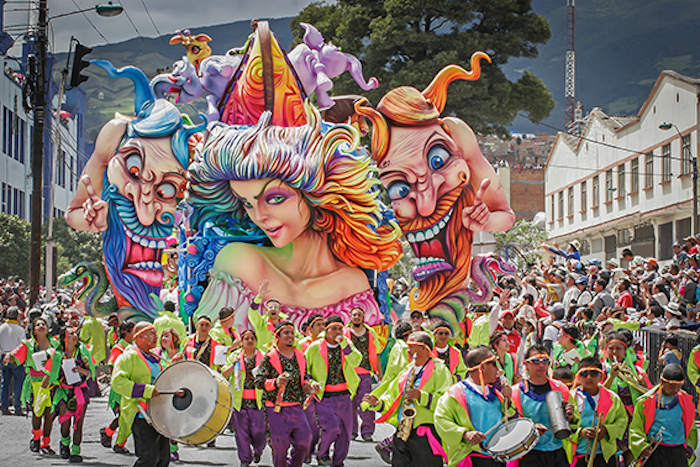
Photo: dereklow -
Alumbrados de Medellín Christmas Illuminations is a typical seasonal event in Medellín, Colombia, where the city hangs millions of Christmas lights and hosts light displays and other cultural events. The lights have remained on and around the Medellín River and La Playa Avenue since the 1990s, though the event has grown to encompass over a hundred different spots throughout the city. The lights are planned and funded by Empresas Pblicas de Medelln (EPM), the city's public utilities business, and the festival normally lasts from the beginning of December to the beginning of January.
Alumbrados de Medellín Christmas Illuminations has grown in size each year as a result of its tourist appeal, with increased availability of energy resources and funds, as well as increased participation by local inhabitants. The celebration began on December 7, the Day of the Little Candles, which marks the unofficial start of Colombia's Christmas season. In recent years, however, the lighting has started earlier to meet the rise in tourism. Children under the age of 12 are admitted free to all recreational parks and museums, while admission to the Antioquia Museum is free for everyone during this season.
In the month of December 2012, the Lighting of Medellín was selected among the top ten cities to view holiday lights by the National Geographic website.Dates: 7 December
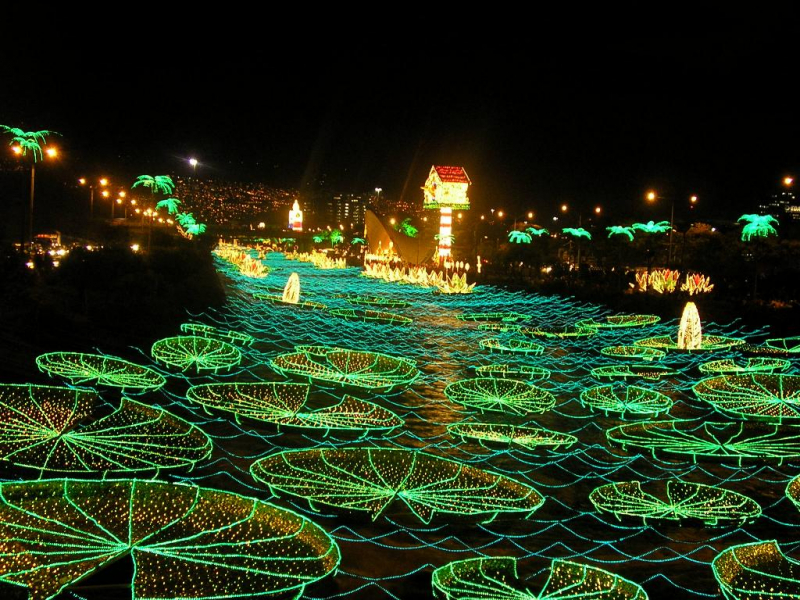
Photo: wikipedia 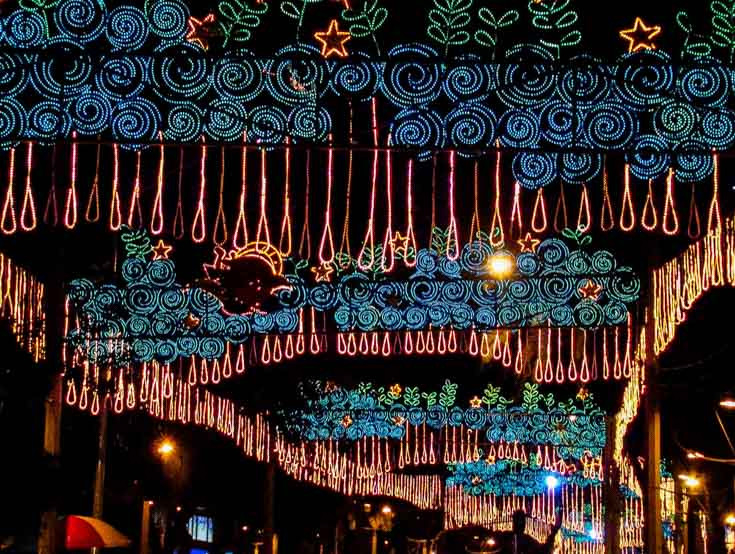
Photo: colombia4u -
El Carnaval del Diablol is one of Colombia's most beautiful celebrations, drawing numerous national and international visitors to the municipality of Riosucio in the department of Caldas. The carnival is also part of the nation's oral, cultural, and intangible heritage. With time, this turned into a joyous, humorous, and entertaining gathering. The figure of the devil was chosen as the festivity's effigy in the year 1915.
It is said that this carnival, like that of the Pasto Blacks and Whites, began on a day off (January 5) granted by the Spanish crown to the slaves, who gave free rein to their African traditions and dances with Matachinesque performances consisting of killing the snake that symbolized wisdom and the idea was to seize it. The indigenous people then joined in the festivities, paying homage to the Virgen de la Chicha, subsequently known as the Virgen de la Candelaria. The Spaniards were not far behind, and they arrived at horseback in large quantities to commemorate Three Kings' Day.
El Carnaval del Diablo that is divided into five chapters: The "Decrees", The "Treat", The "Entrance of the Devil", The "Crews":, The "Testament": As a result, in Riosucio, the carnival is always mentioned as a state of the soul that gives the town its identity and character. It is a tremendous moment of liberty, where people celebrate freedom in all of its manifestations.
Dates: 2 January - 12 January
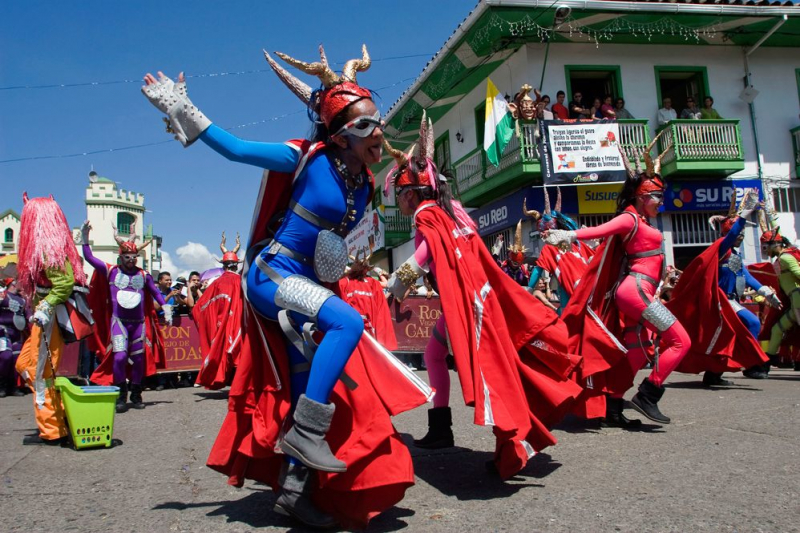
Photo: pinterest 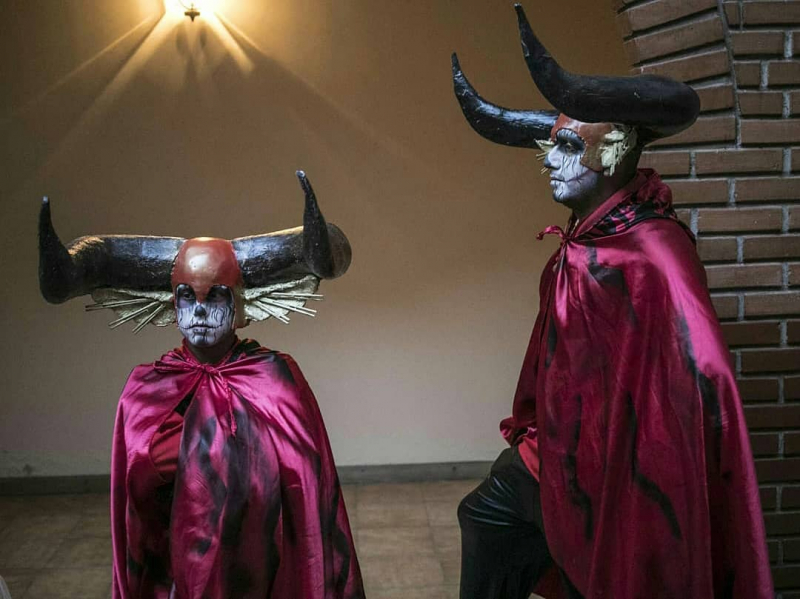
Photo: wego-planet











